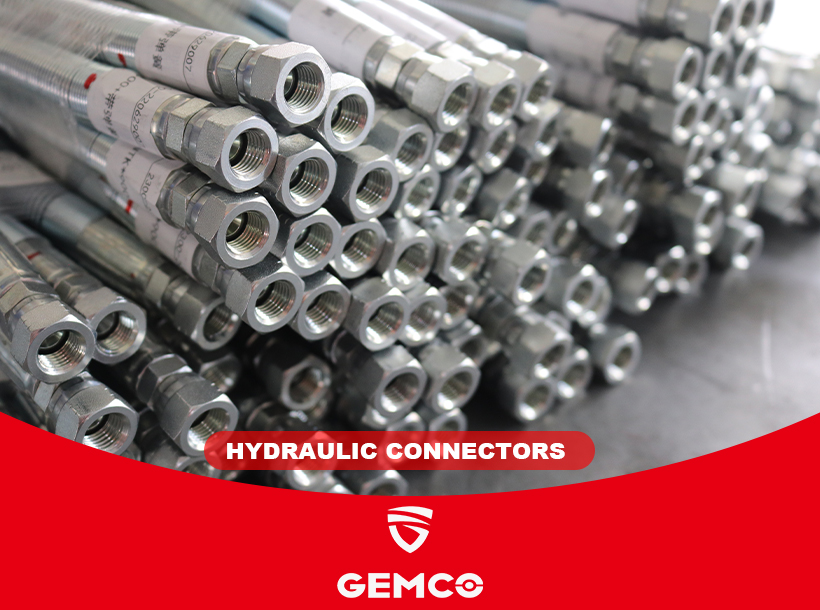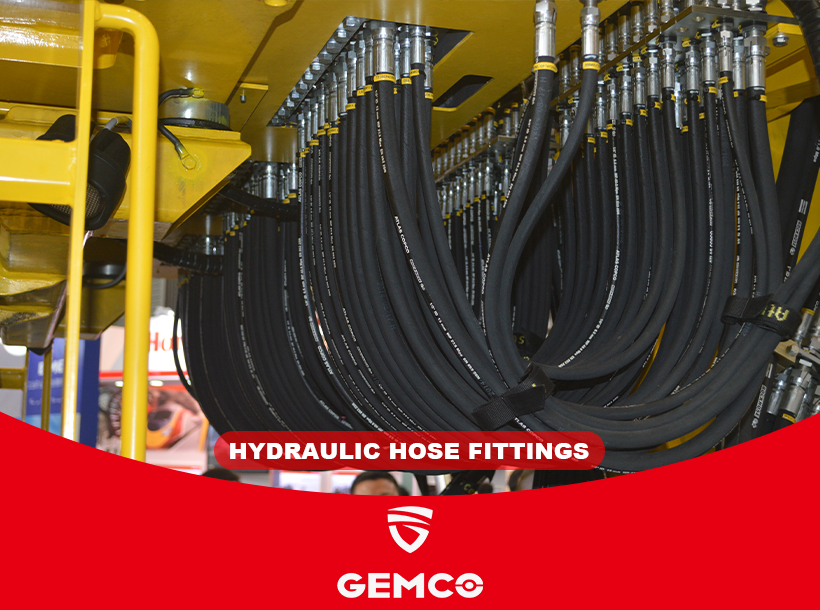How to choose the right hydraulic hose fittings is a very important thing. These fittings will be used to connect hydraulic hoses, tubes etc. to hydraulic pumps, valves and other components of the hydraulic system. If you accidentally choose the wrong accessories, it will reduce the efficiency of the entire hydraulic system, and even cause major safety problems.
Material of hose fittings
Hoses and fittings come in many different types and materials. Importantly, the material used for a hydraulic hose fitting determines its characteristics. Most common fittings are made of steel, stainless steel or brass.
Steel fittings are a mixture of iron and some other metals to make them more durable and increase heat resistance. For example, carbon steel fittings made from a mixture of iron and carbon can withstand temperatures from -65°F to 500°F.
Use stainless steel fittings when operating in temperatures ranging from -425°F to 1200°F. They are an excellent choice for highly corrosive environments. Typically, they are rated up to 10,000 psi.

hydraulic connectors
Six things to consider When choosing hydraulic fittings
- The security of the connection and its type of seal
Hose fittings with different threads have certain advantages and disadvantages. We need to choose the corresponding sealing fittings according to the actual situation of the application, so that our hydraulic system can work normally and efficiently, and can ensure the integrity of the entire system and safe operation.
- Pressure Level
As equipment is modernized, often comes higher operating pressures. To cope with high operating pressures, more and more customers prefer to use O-ring seals. They are more resistant to cracks. O-ring seals also prevent over-torque and the risk of leakage. Stainless steel hose fittings have the highest pressure rating in terms of material.
- Vibration
Vibration affects hydraulic pipes and can alter torque and cause fatigue. Remember to check for leaks and damage in areas of high vibration
- Temperatures
The temperature range of a hose fitting is determined by three factors: material, plating and seals. For leak-free operation, use O-ring seals if operating temperature permits.

hydraulic hose fittings
- Chemical Compatibility and Working Fluids
As a rule of thumb, hose cores, covers, fittings and O-rings should be chemically compatible with each other. Take extra care when selecting hose for gas applications, especially where there is a possibility of penetration, to avoid explosions, fires and exposure to toxic fumes.
- Availability
In general, most NPT and JIC fittings are widely used and are available in a variety of configurations. So if you use any specific fittings with long lead times, choose the ones that are easier to find or store.
- Mixing and Matching
Mixing one manufacturer’s fittings with another manufacturer’s hose may result in crimp failure or rupture as the two products are not compatible. The way the fitting is secured to the hose and the tolerances allowed for the hose crimp may vary. we do not recommend to mix neither SAE nor ISO couplings with hoses from different manufacturers
What’s next?
It is important to remember to check the hoses and fittings every two months for tight connections and any leaks. Even new accessories can cause problems if choosing wrong. Although choosing hydraulic fittings can sometimes be overwhelming, if you follow our simple guide, this should no longer be a problem.
If you need to know more about hydraulic hose fittings, please feel free to contact us.
Gemco provides corresponding hydraulic connectors for the world’s hydraulic field, and is a high-quality manufacturer of hydraulic fittings.
Welcome to download our product brochures for more information.
 GEMCO website logo
GEMCO website logo
